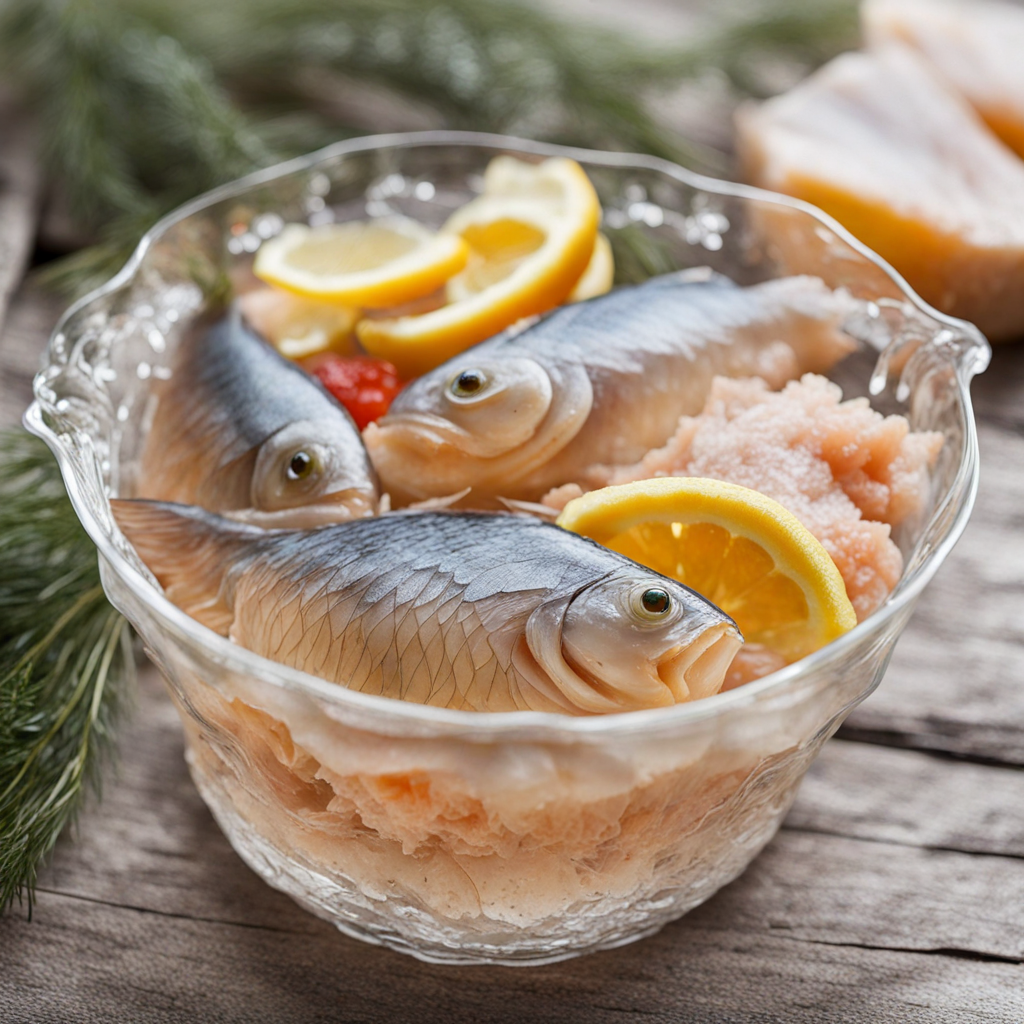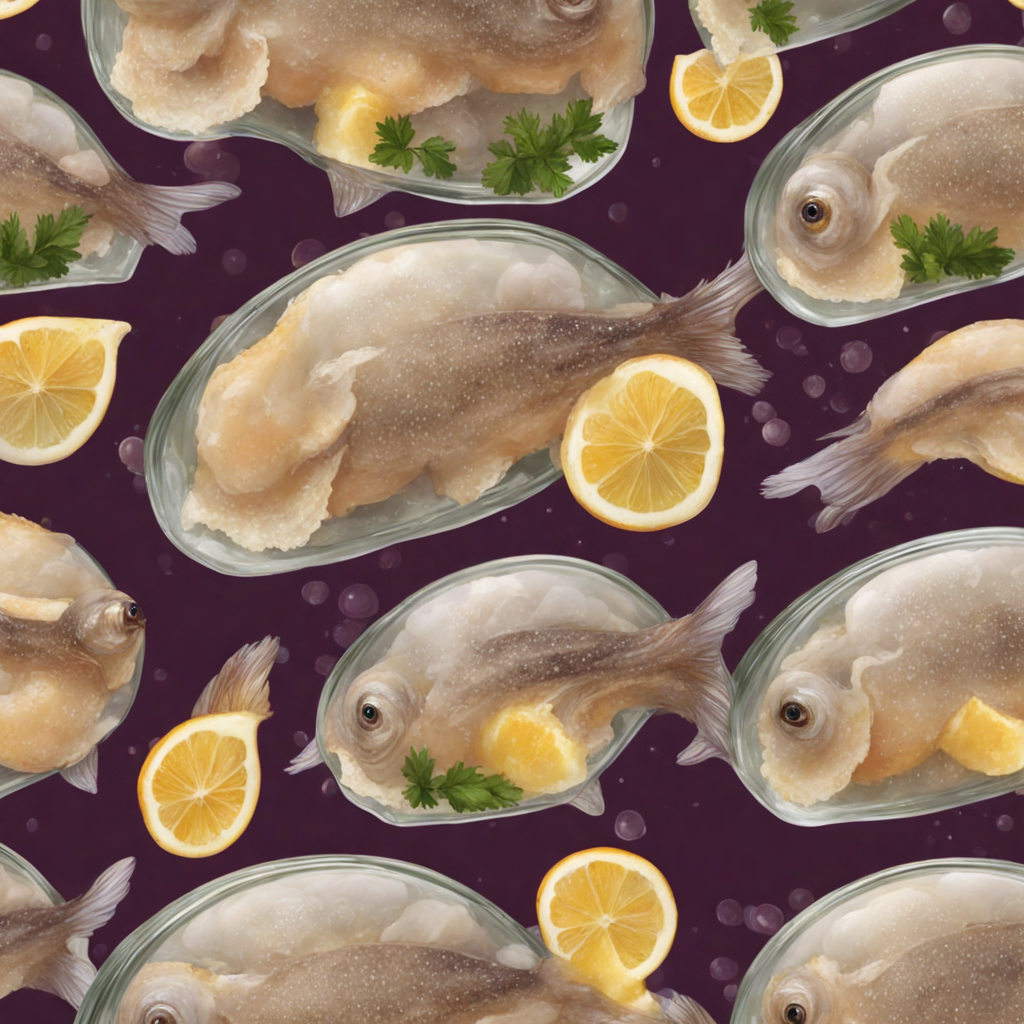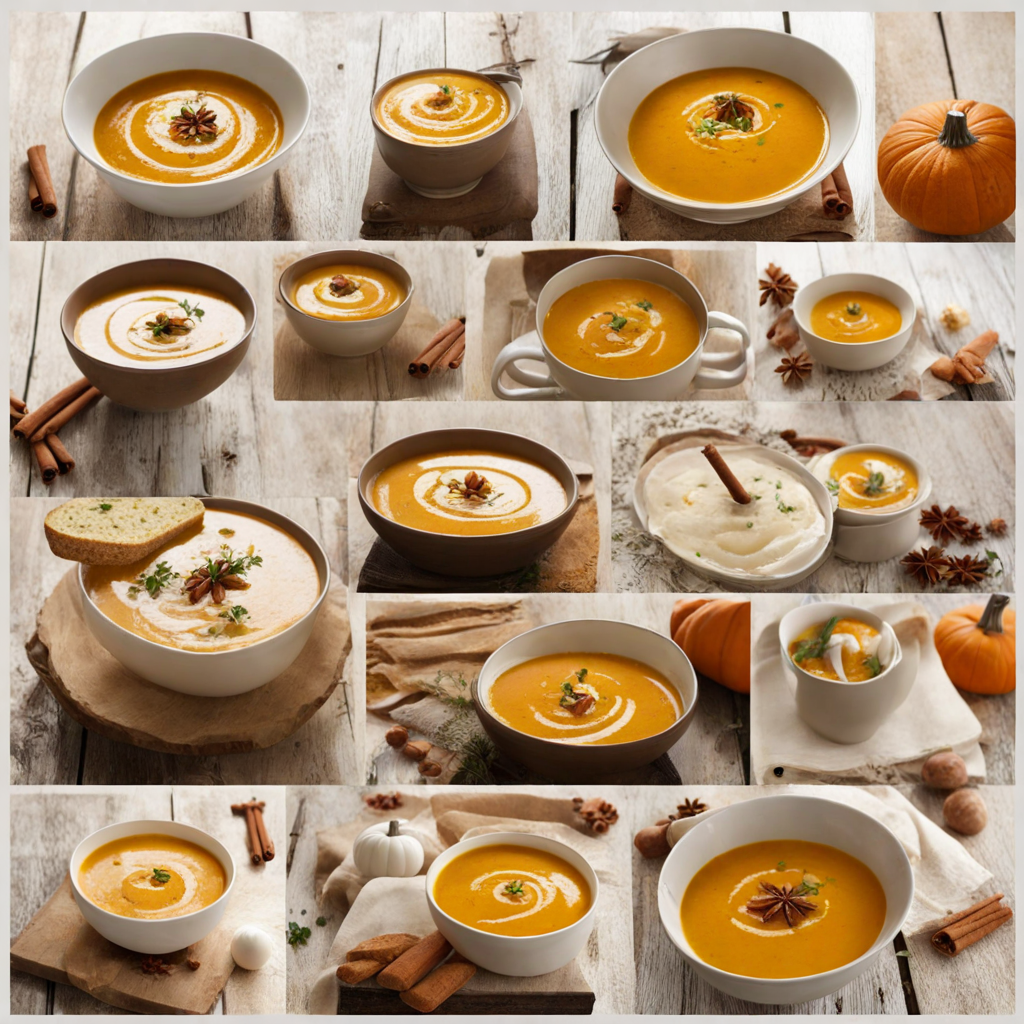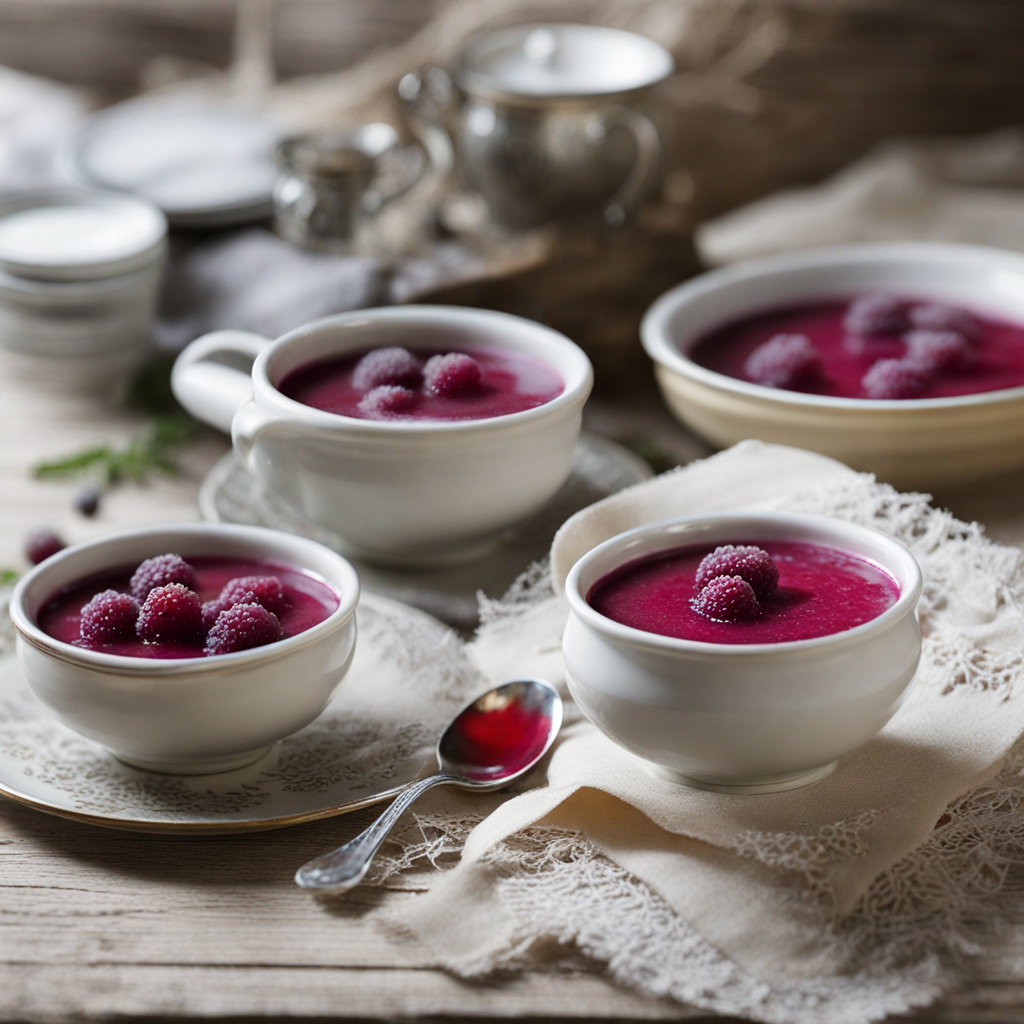Jellied Fish
Jellied Fish, or 'kiluvõie' in Estonian, is a traditional dish that beautifully showcases the country's rich maritime heritage. This unique delicacy typically features a variety of fish, such as herring or sprats, that are preserved in a gelatinous broth made from fish stock, spices, and sometimes a splash of vinegar. The result is a visually appealing dish, with the fish suspended in a shimmering layer of jelly, often garnished with fresh herbs, hard-boiled eggs, or sliced vegetables. The preparation not only enhances the fish's natural flavors but also provides a delightful texture that is both firm and silky. The taste of Jellied Fish is a harmonious blend of oceanic freshness and subtle tanginess. The fish itself retains its briny essence, while the jelly adds a light, savory depth that complements the seafood. Each bite offers a refreshing experience, with the gelatinous layer providing a satisfying mouthfeel that contrasts with the tender fish. This dish is often served cold as an appetizer or part of a festive spread, making it a perfect addition to gatherings and celebrations in Estonia. Accompanying Jellied Fish are typically dark rye bread and a dollop of creamy horseradish or mustard sauce, which elevate the dish further. The bread's earthy flavor pairs well with the delicate seafood, while the sauce introduces a spicy kick that contrasts beautifully with the dish's mildness. Overall, Jellied Fish is more than just a meal; it is a culinary experience that encapsulates the essence of Estonian culture, inviting those adventurous enough to explore its distinctive taste and texture.
How It Became This Dish
Kalasült: A Culinary Gem of Estonia Kalasült, or fish jelly, is a traditional Estonian dish that encapsulates the essence of the region's culinary heritage. Originating from the country's long-standing relationship with the Baltic Sea, Kalasült is not only a culinary delight but also a cultural artifact that reflects the history, lifestyle, and values of the Estonian people. Origins The roots of Kalasült can be traced back to the agrarian and fishing communities that thrived along the Estonian coastline. Archaeological evidence suggests that the area has been inhabited since the Stone Age, with fishing being a primary source of sustenance for these early settlers. Over time, fish became a staple in the Estonian diet, leading to various preservation techniques, one of which is jellification. The dish itself is typically made from various types of fish, often herring, salmon, or perch, which are simmered with spices and then set in a gelatinous broth made from fish stock. The use of gelatin, derived from the bones and skins of the fish, is crucial to achieving the desired texture. This technique not only preserved the fish for longer periods but also enhanced its flavor, making Kalasült a practical solution for a region with a harsh winter climate. Cultural Significance Kalasült is more than just a dish; it is a symbol of Estonian identity and resilience. During the Soviet occupation, traditional foods like Kalasült became important markers of cultural heritage. In a time when many aspects of Estonian culture were suppressed, preparing and sharing Kalasült allowed families to maintain their culinary traditions and resist cultural homogenization. The dish is often served during festive occasions, such as Christmas, Easter, and Midsummer, highlighting its role in communal celebrations. It is typically presented on a platter, garnished with fresh herbs, vegetables, and sometimes even boiled eggs, making it not only a treat for the palate but also a feast for the eyes. Kalasült is often accompanied by a dollop of mustard or horseradish, which adds a tangy contrast to the rich, savory flavors of the fish jelly. This combination has become a staple in Estonian dining, emphasizing the importance of balance in flavor and presentation. Development Over Time As Estonia transitioned from the Soviet era to independence in the early 1990s, there was a resurgence of interest in traditional foods, including Kalasült. This revival was part of a broader movement to reclaim national identity and cultural heritage. Chefs began experimenting with the dish, incorporating modern techniques and presentation styles while still honoring its historical roots. Contemporary versions of Kalasült have emerged, featuring a wider variety of ingredients, including vegetables and even spices that were not traditionally used. The dish has found its way onto the menus of gourmet restaurants, where chefs showcase their creativity while paying homage to its origins. Moreover, the rise of the farm-to-table movement has encouraged the use of locally sourced fish and sustainable practices in the preparation of Kalasült. This alignment with environmental consciousness resonates deeply with the Estonian culture, which has a profound respect for nature and its resources. Kalasült in the Modern Era Today, Kalasült remains a beloved dish among Estonians, both at home and abroad. It is often featured in food festivals and culinary events, where chefs and home cooks alike showcase their interpretations. The dish has also gained international attention, as food enthusiasts discover the unique flavors and textures that define this traditional Estonian delicacy. Social media has played a significant role in the promotion of Kalasült, with many Estonian influencers sharing recipes, tips, and personal anecdotes associated with the dish. This digital platform has allowed younger generations to connect with their heritage while also introducing Kalasült to a global audience. In addition, the dish's adaptability has made it a favorite for modern gatherings, such as picnics and potlucks, where it can be easily transported and served cold. Its popularity reflects a growing trend towards traditional foods that resonate with a sense of place and identity while accommodating contemporary lifestyles. Conclusion Kalasült is more than just a dish; it is a story of survival, identity, and cultural pride for the Estonian people. From its humble origins as a means of preserving fish to its modern interpretations in gourmet cuisine, Kalasült embodies the resilience of a nation and the rich tapestry of its culinary history. As the world continues to embrace diverse food cultures, Kalasült stands as a testament to the enduring significance of traditional foods. It invites us to explore not just the flavors of a dish, but the stories, memories, and values that are woven into the fabric of our culinary experiences. For Estonians and food lovers alike, Kalasült represents a delicious connection to the past, a celebration of community, and a dish that will continue to evolve while remaining deeply rooted in its cultural heritage.
You may like
Discover local flavors from Estonia







